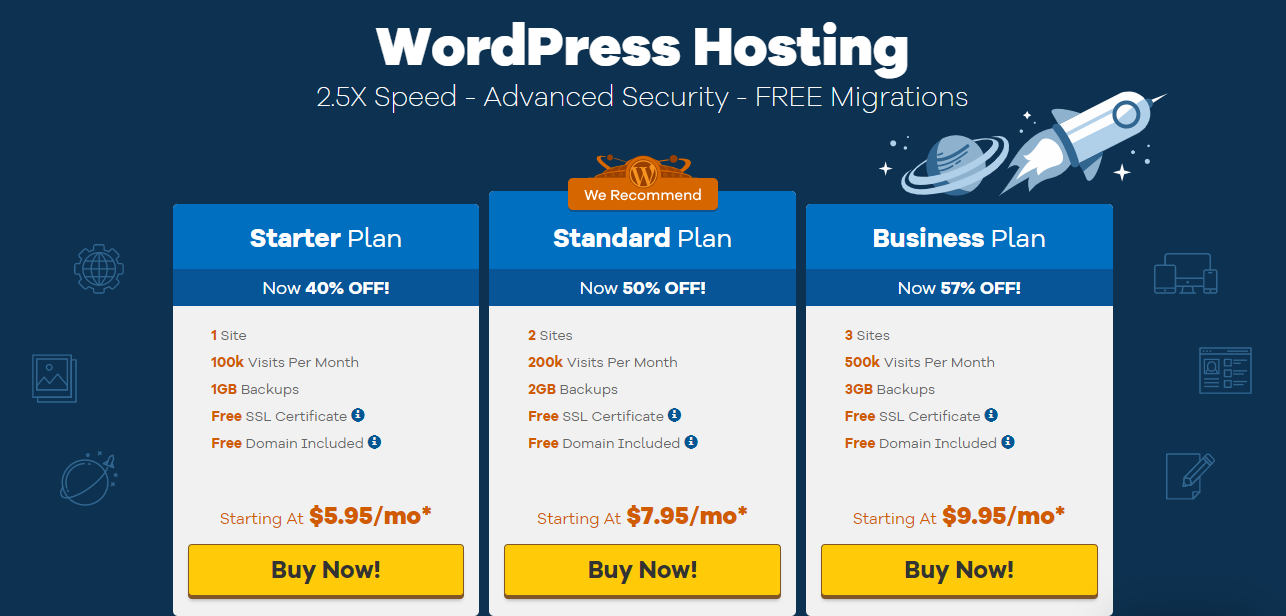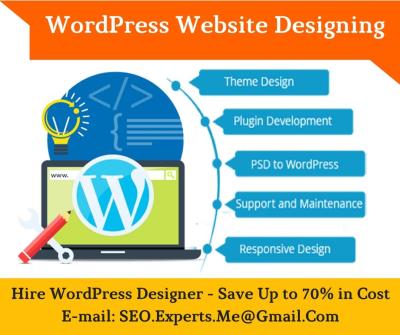Starting a website can feel overwhelming, especially with so many options out there. If you’re considering WordPress, you’re in luck because they offer a variety of plans tailored to different needs — whether you’re a beginner, a growing business, or an experienced developer. Understanding what each plan offers can help you make the best choice without overspending or ending up with features you don’t need. In this post, we’ll break down the ins and outs of WordPress plans, so you can confidently pick the perfect one for your website journey.
Overview of Different WordPress Plans and Features

WordPress offers several plans, each designed to meet different types of users and website goals. Here’s a quick overview:
| Plan | Best For | Features |
|---|---|---|
| Free | Beginners, hobbyists, experimenting |
|
| Personal | Personal blogs, small portfolios |
|
| Premium | Business owners, writers, freelancers |
|
| Business | Companies, e-commerce, professionals needing full control |
|
| eCommerce | Online stores, retail businesses |
|
Each plan is designed to grow with your website. You might start with a free plan just to get your feet wet, then upgrade as your needs become more complex — whether you want a sleek blog, a professional portfolio, or a full-blown online store. Consider what features are most important for your success, and choose accordingly. Remember, it’s easy to upgrade later, so don’t stress about getting everything perfect from the start!
3. Factors to Consider When Selecting a WordPress Plan

Choosing the right WordPress plan isn’t always a straightforward decision, especially with so many options out there. To make the best choice, it’s important to consider a few key factors that align with your website’s goals and needs.
Understanding Your Website’s Purpose
First things first: What’s the main goal of your website? Are you creating a simple blog, an online store, or a large business site? Your purpose will heavily influence which plan is right for you. For example:
- Personal blogs or small portfolios: Basic plans often suffice.
- Online stores or e-commerce sites: You’ll need plans that support WooCommerce and other e-commerce features.
- Business websites or enterprise-level sites: Consider plans that offer advanced features, better performance, and scalability.
Storage and Bandwidth Needs
Think about how much content you plan to upload and how much traffic you expect. If you’re just starting out, a plan with limited storage might be enough, but if you’re expecting a lot of visitors or uploading large files, you’ll want plans that offer more bandwidth and storage. Missing out here could mean slow load times or even site crashes.
Design and Customization Options
Some plans come with pre-designed themes and limited customization options, while others give you full control over your site’s appearance. If you want a unique, branded look, make sure the plan supports custom themes and plugins.
Support and Security
Having reliable support can save you a lot of headaches. Check if the plan includes 24/7 customer support, security features, SSL certificates, backups, and malware scanning. These are especially important if you’re running a business or handling sensitive customer data.
Budget and Pricing
Finally, consider your budget. There’s no need to overspend on features you won’t use, but skimping on essential features can backfire. Balance what you need with what you can afford, and remember that investing a little more can often save you time and money in the long run.
4. Benefits of Upgrading Your WordPress Plan

Once your website starts growing, you might find yourself needing more from your WordPress plan. Upgrading isn’t just about more features — it’s about supporting your website’s evolution and ensuring it remains fast, secure, and user-friendly.
Enhanced Performance and Speed
Upgrading often means better hosting resources like increased bandwidth, faster servers, and optimized configurations. This results in quicker load times, which keeps visitors happy and reduces bounce rates. Remember, faster sites tend to rank higher in search engines too!
Increased Storage and Traffic Limits
As you add more content, images, videos, or products, your storage needs grow. Upgrading plans provide more space and higher traffic limits, preventing your site from becoming sluggish or inaccessible during traffic spikes.
Access to Advanced Features and Plugins
Higher-tier plans usually come with support for premium themes, advanced plugins, and integrations. This gives you more flexibility to customize your website, add new functionalities, and stay ahead of competitors.
Better Security and Backups
Security threats are always evolving. Upgraded plans often include enhanced security measures, regular backups, and malware removal services. This peace of mind is invaluable, especially if your website handles sensitive customer data or transactions.
Priority Support and Assistance
If you encounter issues, having access to priority support can make a huge difference. Upgraded plans often come with dedicated support channels, quicker response times, and expert guidance, helping you resolve problems faster and keep your website running smoothly.
Scalability for Future Growth
As your website expands, your hosting needs will grow too. Upgrading plans ensures you’re prepared for future growth, avoiding the hassle and expense of migrating your site later on.
In short, upgrading your WordPress plan is an investment in your website’s success. It helps you deliver a better experience for your visitors, provides peace of mind, and supports your long-term goals.
5. How to Choose the Right WordPress Plan for Your Website Goals
Choosing the perfect WordPress plan can feel overwhelming, especially with so many options available. The key is to match the plan’s features with your website goals. Let’s break down some important considerations to help you make an informed decision.
Assess Your Website’s Purpose
- Personal Blog or Portfolio: If you’re sharing your thoughts or showcasing your work, a basic plan with a free or low-cost option might do just fine.
- Small Business or Local Store: You’ll want a plan that supports custom domains, professional themes, and essential plugins.
- Large E-commerce Site: This requires a plan with robust e-commerce features, higher storage, and advanced security.
Estimate Your Traffic and Storage Needs
Think about how many visitors you expect each month and the type of content you’ll upload. For example, high-resolution images or videos can quickly eat up storage space. If you anticipate rapid growth, choose a plan that allows easy upgrades.
Consider Customization and Flexibility
Some plans offer more control over themes, plugins, and code editing. If you want to build a truly unique website, look for plans that provide these advanced customization options.
Evaluate Support and Security Features
If you’re new to website management, having good customer support can be a lifesaver. Check whether the plan includes 24/7 support, backups, SSL certificates, and security features to protect your site.
Budget and Future Growth
Balance your current budget with your future plans. Sometimes investing a little more upfront can save you headaches later, especially if you plan to scale your website significantly.
Pro Tip: Make a list of your priorities—whether it’s ease of use, customization, storage, or support—and compare plans side by side. Remember, you can always upgrade later as your website grows!
6. Conclusion and Tips for Making the Best Choice
Choosing the right WordPress plan is a crucial step in building a successful website. It’s about finding the perfect balance between your current needs and future ambitions. Here’s a quick recap of tips to help you make the best choice:
- Identify Your Goals: Clarify what you want your website to achieve—be it a personal blog, portfolio, or online store.
- Assess Your Needs: Think about storage, customization, security, and support requirements.
- Start Small, Think Big: If you’re unsure, begin with a plan that offers room to grow. You can always upgrade later without losing your content.
- Compare Plans: Use comparison charts to see which features are included in each plan. Don’t forget to consider add-ons or extra costs.
- Seek Support and Resources: Choose a plan that offers reliable customer support and access to tutorials or community forums.
Remember, the right plan sets the foundation for your website’s success. Take your time researching, and don’t hesitate to ask for advice from WordPress experts or support teams. With the right plan in place, you’ll be well on your way to creating a beautiful, functional, and scalable website that meets your needs now—and as you grow!

